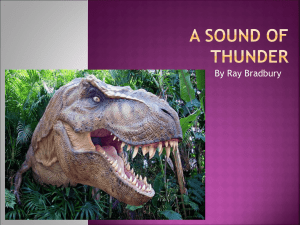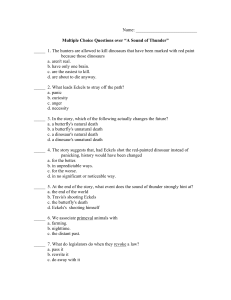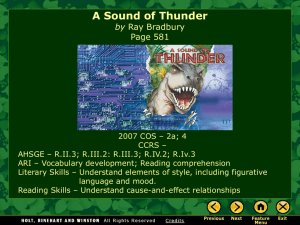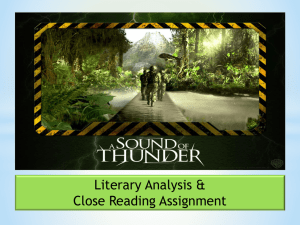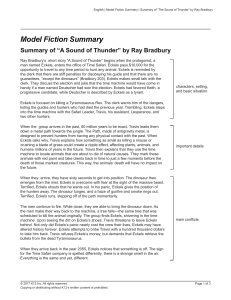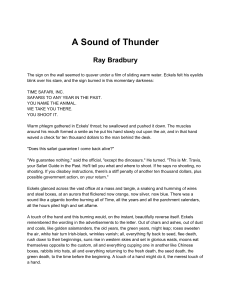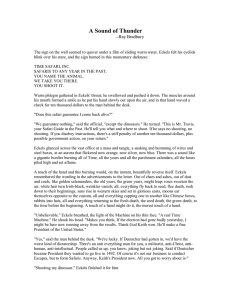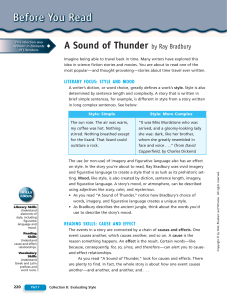Definitions and Answers
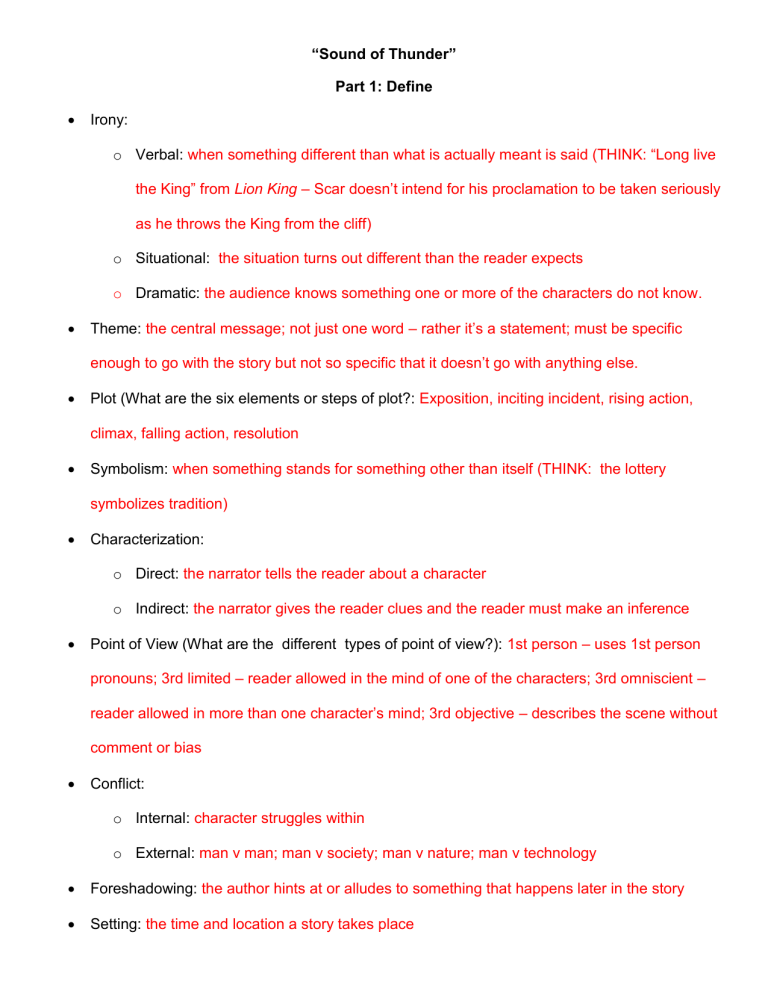
“Sound of Thunder”
Part 1: Define
Irony: o Verbal: when something different than what is actually meant is said (THINK: “Long live the King” from Lion King – Scar doesn’t intend for his proclamation to be taken seriously as he throws the King from the cliff) o Situational: the situation turns out different than the reader expects o Dramatic: the audience knows something one or more of the characters do not know.
Theme: the central message; not just one word – rather it’s a statement; must be specific enough to go with the story but not so specific that it doesn’t go with anything else.
Plot (What are the six elements or steps of plot?: Exposition, inciting incident, rising action, climax, falling action, resolution
Symbolism: when something stands for something other than itself (THINK: the lottery symbolizes tradition)
Characterization: o Direct: the narrator tells the reader about a character o Indirect: the narrator gives the reader clues and the reader must make an inference
Point of View (What are the different types of point of view?): 1st person
– uses 1st person pronouns; 3rd limited – reader allowed in the mind of one of the characters; 3rd omniscient – re ader allowed in more than one character’s mind; 3rd objective – describes the scene without comment or bias
Conflict: o Internal: character struggles within o External: man v man; man v society; man v nature; man v technology
Foreshadowing: the author hints at or alludes to something that happens later in the story
Setting: the time and location a story takes place
Part 2: Application
1. Summarize the plot of “The Sound of Thunder.” What order does the story go in?
Exposition: 2055 – Eckels, an avid hunter, goes to time machine place – Time Safari Inc. and says he wants to go back in time
Inciting incident: go back to prehistoric time to kill a T-Rex
Rising Action: everything between inciting incident and climax
Climax: Eckels runs away and steps off the path.
Falling Action: Eckels sees mud on his shoes on the way back to the present.
Conclusion: Eckels returns to time machine business and realizes that he has changed the course of events by stepping off the path. Eckels is shot.
2. What is the conflict of “The Sound of Thunder.” What kind of conflict is it (Internal or External)?
External Conflict: man v nature (Eckels v T-Rex, butterfly); man v man (Eckels v Travis)
3. Provide 2 examples of direct and indirect characterization. What are these examples telling us about those characters?
Direct characterization:
”It towered thirty feet above half of the trees.”
Indirect characterization: “I’ve hunted tiger, wild boar, buffalo, elephant…” INFER: Eckels is arrogant based on the way he discusses all the animals he has hunted.
4.
Identify an example of irony in “The Sound of Thunder.” What kind of irony is it?
Dramatic irony: we understand why the election results changed but the guy working the desk doesn’t.
Situational irony: the expectation is that he will kill the T-Rex but he ends up changing the future by stepping on a butterfly.
Verbal irony:
Travis says something to Eckels that he doesn’t mean.
5. Name an example of foreshadowing in “The Sound of Thunder”. What is this event foreshadowing?
Travis tells Eckels to mak e sure he doesn’t step off the path. – foreshadows he will step off the path.
6. What is the theme of “The Sound of Thunder”? Provide textual evidence to prove this.
Any minor action can have long-lasting implications on the future. Eckles stepping on the butterfly changes everything in the future.
7. What is the point of view in “The Sound of Thunder”?
3 rd person limited – only get perspective of Eckel.
8.
What is the setting of “The Sound of Thunder”?
2055 and then prehistoric time and then 2055
